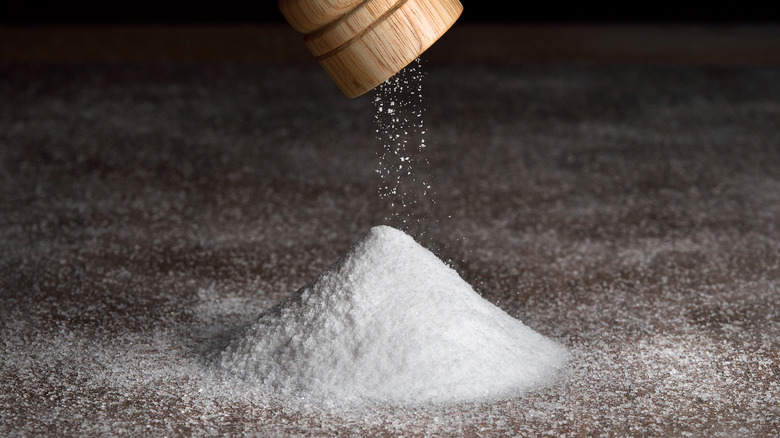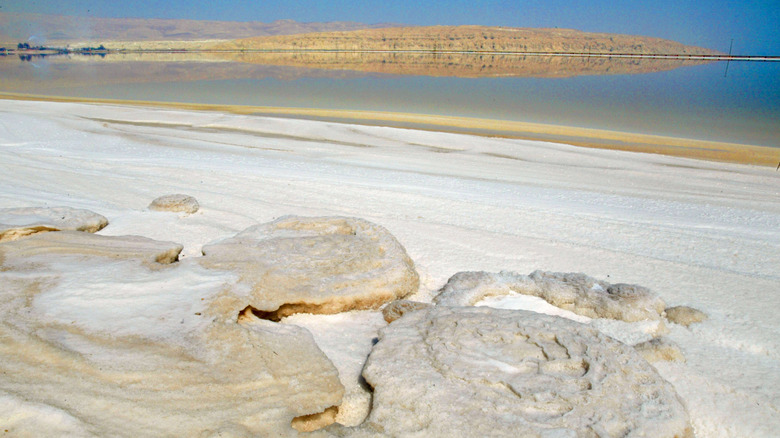The Big Difference Between Table And Sea Salt
You probably have one of two images that come to mind when it comes to salt: a solid white shaker coupled with a black one for pepper, or a giant blue paperboard container with a metal spout you flick open with your thumb. The writer Isak Dinesen once said, "The cure for anything is salt water: sweat, tears, or the sea," but salt (or, more specifically, sodium) is also a source of blame for high blood pressure and kidney stones. Too much can make you thirsty, while too little can leave a dish lacking in flavor. What looks like a generic pile of granules is anything but simple.
A quick science lesson: what we colloquially call "salt" is NaCl, a combination of sodium and chlorine, and humans have natural receptors for it on their tongues. It is essential to life, both for fluid regulation and for its role in maintaining healthy nerve function (via Exploring Our Fluid Earth). But if you're not a scientist or physician, your main interest in salt probably has more to do with its culinary applications. Open up a bag of chips and get ready to learn.
Is there a flavor difference between table salt and sea salt?
Believe it or not, the salt you've been consuming is likely sea salt — the difference is how long ago it was in the sea. For the last century, American table salt has typically been sold in a formulation fortified with the essential nutrient iodine (via Nutrients). It is procured from salt mines, which are essentially dried-up bodies of seawater. Other additives may be incorporated during processing, but these aren't bad for you, as the advent of the iodized version of table salt is responsible for millions of lives saved from iodine deficiency, which is linked to acute or chronic hypothyroidism, as well as congenital thyroid deficiency syndrome (via Healthline).
As for the stuff in the bottle at the fancy grocery store labeled "sea salt?" That kind of salt came from water that was forcibly evaporated from a moving body of water and thus carries more trace minerals (via Healthline). Because it's less processed, it does not have added iodine. If you're going to use it, chefs recommend using it as a finisher or for dishes that are already cooked — once it's dissolved by heat, you're not likely to notice much of a flavor difference between sea salt or table salt.


